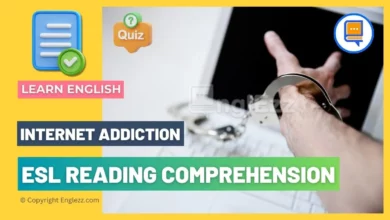Understanding academic research terminology is crucial for students, scholars, and professionals navigating the world of research. Whether you’re embarking on a new research project or reviewing existing studies, grasping these essential terms can significantly enhance your comprehension and communication. In this blog post, we’ll break down the 50 most common academic research English terms, providing clear definitions, phonetic transcriptions, and practical examples to illustrate each term.
50 Academic Research English Terms Every Student Must Know
This guide is designed to make these often complex concepts more accessible, helping you to better engage with academic literature and discussions.
Whether you’re a beginner or looking to refresh your knowledge, this list will serve as a valuable resource for mastering the language of research.
#1. Hypothesis 🧠
Definition: A proposed explanation for a phenomenon that can be tested through research and experimentation.
Phonetic Transcription: /haɪˈpɒθɪsɪs/
Examples:
- The hypothesis that increased study time improves exam performance can be tested through a controlled study.
- Researchers formulated a hypothesis that air pollution affects lung function and designed experiments to test it.
#2. Variable 📊
Definition: Any factor or condition that can be changed or controlled in an experiment to test its effects.
Phonetic Transcription: /ˈvɛəriəbl/
Examples:
- In a study on plant growth, light intensity is a variable that can be adjusted to observe its impact.
- Temperature is a key variable in experiments on chemical reactions.
#3. Methodology 🔬
Definition: The systematic, theoretical analysis of the methods applied to a field of study.
Phonetic Transcription: /ˌmɛθəˈdɒlədʒi/
Examples:
- The research methodology included surveys and interviews to gather data on consumer preferences.
- A clear methodology was outlined in the paper to ensure the reproducibility of the results.
#4. Literature Review 📚
Definition: A comprehensive summary and analysis of the existing research on a specific topic.
Phonetic Transcription: /ˈlɪtərəʧər rɪˈvjuː/
Examples:
- The literature review revealed gaps in current research on renewable energy sources.
- She conducted a literature review to understand the theoretical framework for her study.
#5. Data Collection 📈
Definition: The process of gathering and measuring information on variables of interest.
Phonetic Transcription: /ˈdeɪtə kəˈlɛkʃən/
Examples:
- Data collection for the survey involved distributing questionnaires to a diverse sample.
- The research team used sensors for data collection on environmental conditions.
#6. Quantitative Research 📉
Definition: Research that involves the collection and analysis of numerical data to understand patterns and phenomena.
Phonetic Transcription: /ˈkwɒntɪteɪtɪv rɪˈsɜːʧ/
Examples:
- The study used quantitative research methods to measure the impact of advertising on sales.
- Quantitative research was employed to analyze survey results and identify trends.
#7. Qualitative Research 🗣️
Definition: Research that explores phenomena through non-numerical data, such as interviews and observations.
Phonetic Transcription: /ˈkwɒlɪteɪtɪv rɪˈsɜːʧ/
Examples:
- Qualitative research methods were used to gain insights into participants’ experiences with mental health services.
- The research included qualitative interviews to explore the motivations behind consumer behavior.
#8. Research Design 📐
Definition: The plan or strategy for conducting research, including the methods and procedures for data collection and analysis.
Phonetic Transcription: /rɪˈsɜːʧ dɪˈzaɪn/
Examples:
- The research design for the clinical trial included a double-blind setup to ensure unbiased results.
- A detailed research design was created to outline the steps for investigating the new teaching method.
#9. Sample Size 📏
Definition: The number of subjects or units included in a research study.
Phonetic Transcription: /ˈsæmpl saɪz/
Examples:
- The sample size for the study was 500 participants to ensure statistical significance.
- Researchers adjusted the sample size to account for potential dropouts in the longitudinal study.
#10. Hypothesis Testing 🔍
Definition: The process of determining whether there is enough evidence to reject a null hypothesis.
Phonetic Transcription: /haɪˈpɒθɪsɪs ˈtɛstɪŋ/
Examples:
- Hypothesis testing was conducted to verify if the new drug was more effective than the existing treatment.
- The study employed hypothesis testing to evaluate the impact of diet on cholesterol levels.
#11. Peer Review 📖
Definition: The evaluation of research by experts in the same field to ensure quality and validity.
Phonetic Transcription: /pɪər rɪˈvjuː/
Examples:
- The manuscript underwent peer review before being published in the academic journal.
- Peer review provided valuable feedback that helped refine the research methodology.
#12. Statistical Significance 📉
Definition: A measure of whether the results of a study are unlikely to have occurred by chance alone.
Phonetic Transcription: /stəˈtɪstɪkəl sɪɡˈnɪfɪkəns/
Examples:
- The results were considered statistically significant if the p-value was below 0.05.
- Statistical significance was assessed to determine if the observed effect was due to the intervention.
#13. Control Group 🔬
Definition: A group in an experiment that does not receive the treatment or intervention being tested.
Phonetic Transcription: /kənˈtrəʊl ɡruːp/
Examples:
- The control group in the study was given a placebo to compare against the experimental group.
- Researchers used a control group to isolate the effects of the new teaching method.
#14. Experimental Group 🧪
Definition: The group in an experiment that receives the treatment or intervention being tested.
Phonetic Transcription: /ɪkˈspɛrɪmɛntəl ɡruːp/
Examples:
- The experimental group was given the new medication to test its effectiveness.
- Participants in the experimental group experienced different outcomes compared to the control group.
#15. Confounding Variable 🔍
Definition: An extraneous variable that affects the dependent variable and can lead to misleading results.
Phonetic Transcription: /kənˈfaʊndɪŋ ˈvɛəriəbl/
Examples:
- A confounding variable like participant age was controlled to accurately assess the treatment’s effect.
- Researchers identified and adjusted for confounding variables to ensure the validity of the study.

#16. Independent Variable 🧩
Definition: The variable that is manipulated or changed in an experiment to observe its effects.
Phonetic Transcription: /ˌɪndɪˈpɛndənt ˈvɛəriəbl/
Examples:
- In a study on exercise, the independent variable was the type of physical activity performed.
- The research focused on how changes in the independent variable affected participants’ stress levels.
#17. Dependent Variable 🎯
Definition: The variable that is measured or observed in an experiment to assess the effect of the independent variable.
Phonetic Transcription: /dɪˈpɛndənt ˈvɛəriəbl/
Examples:
- The dependent variable in the study was the participants’ cognitive performance.
- Changes in the independent variable were assessed based on their impact on the dependent variable.
#18. Randomization 🎲
Definition: The process of randomly assigning subjects to different groups to ensure each group is comparable.
Phonetic Transcription: /ˌrændəmaɪˈzeɪʃən/
Examples:
- Randomization was used to assign participants to either the treatment or control group in the clinical trial.
- The study’s randomization process helped eliminate selection bias.
#19. Validity ✔️
Definition: The extent to which a research study accurately measures what it is intended to measure.
Phonetic Transcription: /vəˈlɪdəti/
Examples:
- The validity of the survey was confirmed by its ability to accurately assess respondents’ attitudes.
- Researchers ensured the validity of the experimental results through careful design and analysis.
#20. Reliability 🔄
Definition: The consistency and stability of measurements or results across different instances.
Phonetic Transcription: /rɪˈlaɪəbɪlɪti/
Examples:
- Reliability was assessed by repeating the experiment and obtaining similar results.
- The research tool’s reliability was validated through multiple testing phases.
#21. Sample Bias 📉
Definition: A distortion in the research sample that leads to unrepresentative results.
Phonetic Transcription: /ˈsæmpl ˈbaɪəs/
Examples:
- Sample bias occurred when only certain demographics were included in the study.
- Researchers took steps to minimize sample bias by using random sampling methods.
#22. Ethical Considerations ⚖️
Definition: The moral principles and guidelines that researchers must follow to ensure the integrity and respect of their work.
Phonetic Transcription: /ˈɛθɪkəl ˌkɒnsɪdɛˈreɪʃənz/
Examples:
- Ethical considerations included obtaining informed consent from all participants.
- The research adhered to ethical guidelines to ensure the welfare of the study subjects.
#23. Case Study 📋
Definition: A detailed analysis of a specific instance or case to explore its underlying principles or outcomes.
Phonetic Transcription: /keɪs ˈstʌdi/
Examples:
- The research used a case study approach to investigate the impact of a new teaching strategy on a single classroom.
- A case study of a successful marketing campaign provided insights into effective practices.
#24. Experimental Design 🧩
Definition: The blueprint for conducting experiments, including the structure, procedures, and analysis methods.
Phonetic Transcription: /ɪkˈspɛrɪmɛntəl dɪˈzaɪn/
Examples:
- The experimental design involved a longitudinal study to track changes over time.
- Researchers outlined their experimental design to ensure the study’s rigor and reproducibility.
#25. Literature Gap 📉
Definition: An area within the existing research that lacks sufficient study or information.
Phonetic Transcription: /ˈlɪtərəʧər ɡæp/
Examples:
- Identifying a literature gap helped the researcher focus on an underexplored aspect of climate change.
- The study aimed to address a literature gap in the understanding of digital learning tools.
#26. Research Question ❓
Definition: A clear, focused question that guides the direction and purpose of a research study.
Phonetic Transcription: /rɪˈsɜːʧ ˈkwɛstʃən/
Examples:
- The research question was whether social media usage affects academic performance.
- Formulating a research question helped narrow the scope of the study and define objectives.
#27. Control Variables ⚙️
Definition: Factors that are kept constant to ensure that changes in the dependent variable are due to the independent variable.
Phonetic Transcription: /kənˈtrəʊl ˈvɛəriəblz/
Examples:
- Control variables like age and gender were accounted for in the study to avoid skewed results.
- The study controlled variables such as time of day and environmental conditions.
#28. Statistical Analysis 📊
Definition: The process of using statistical methods to interpret and draw conclusions from data.
Phonetic Transcription: /stəˈtɪstɪkəl əˈnælɪsɪs/
Examples:
- Statistical analysis revealed significant differences between the experimental and control groups.
- The research employed statistical analysis to validate the survey findings.
#29. Data Set 🗃️
Definition: A collection of related data points that are analyzed to extract meaningful insights.
Phonetic Transcription: /ˈdeɪtə sɛt/
Examples:
- The data set included responses from 1,000 survey participants.
- Analyzing the data set provided a comprehensive overview of consumer behavior trends.
#30. Bias ⚠️
Definition: A systematic error introduced into research that skews results in a particular direction.
Phonetic Transcription: /ˈbaɪəs/
Examples:
- Research bias was minimized by using blind procedures to reduce the influence of personal opinions.
- The study addressed potential bias by including a diverse sample population.
#31. Null Hypothesis ⛔
Definition: A statement that there is no effect or no difference, which researchers aim to test against.
Phonetic Transcription: /nʌl haɪˈpɒθɪsɪs/
Examples:
- The null hypothesis posited that there would be no change in test scores after the intervention.
- Researchers tested the null hypothesis to determine if the new policy had an impact.
#32. Power Analysis 🔋
Definition: A statistical technique used to determine the sample size needed to detect an effect of a given size.
Phonetic Transcription: /ˈpaʊər əˈnælɪsɪs/
Examples:
- Power analysis was conducted to ensure the study had sufficient sample size for detecting significant results.
- The research team used power analysis to calculate the number of participants needed for accurate findings.
#33. Pilot Study 🧪
Definition: A preliminary study conducted to test the feasibility and design of a larger research project.
Phonetic Transcription: /ˈpaɪlət ˈstʌdi/
Examples:
- A pilot study was carried out to refine the survey questions before the full-scale research.
- Researchers conducted a pilot study to evaluate the effectiveness of the experimental procedures.
#34. Ethical Approval ✔️
Definition: The process of obtaining permission from an ethics committee to conduct research involving human subjects.
Phonetic Transcription: /ˈɛθɪkəl əˈpruːvəl/
Examples:
- Ethical approval was granted after reviewing the research proposal and ensuring it met ethical standards.
- Researchers awaited ethical approval before starting data collection.
#35. Random Sampling 🎲
Definition: A technique where each member of a population has an equal chance of being selected for a sample.
Phonetic Transcription: /ˈrændəm ˈsæmplɪŋ/
Examples:
- Random sampling was used to ensure that the survey results were representative of the entire population.
- The study employed random sampling to select participants for the clinical trial.
#36. Validity Threats 🚨
Definition: Factors that can compromise the accuracy and reliability of research findings.
Phonetic Transcription: /vəˈlɪdəti θrɛts/
Examples:
- The researchers identified potential validity threats such as sample bias and measurement errors.
- Addressing validity threats was crucial to ensure the integrity of the research results.
#37. Theoretical Framework 🧩
Definition: A structure that guides the research process by providing a theory or set of theories that underpin the study.
Phonetic Transcription: /θɪəˈrɛtɪkəl ˈfreɪmwɜːrk/
Examples:
- Theoretical frameworks were used to interpret the findings of the study on organizational behavior.
- The study’s theoretical framework provided a basis for understanding the observed effects.
#38. Descriptive Statistics 📚
Definition: Statistical methods used to summarize and describe the features of a data set.
Phonetic Transcription: /dɪˈskrɪptɪv stəˈtɪstɪks/
Examples:
- Descriptive statistics were used to report the average age and income of the survey respondents.
- The study included descriptive statistics to outline the general trends in the collected data.
#39. Inferential Statistics 📉
Definition: Statistical methods used to make inferences or generalizations about a population based on a sample.
Phonetic Transcription: /ɪnˈfɜːrənʃəl stəˈtɪstɪks/
Examples:
- Inferential statistics were employed to predict the outcomes for a larger population based on the sample results.
- The research used inferential statistics to determine if the observed effects were statistically significant.
#40. Operational Definition 🔄
Definition: A clear and precise definition of how a variable is measured or manipulated in a study.
Phonetic Transcription: /ˌɒpəˈreɪʃənl dɪˈnɪʃən/
Examples:
- The operational definition of “academic success” included GPA scores and standardized test results.
- Researchers provided operational definitions to ensure consistency in measuring the study variables.
#41. Research Ethics 🧭
Definition: The principles and standards that guide the conduct of research to ensure respect for participants and integrity in reporting.
Phonetic Transcription: /rɪˈsɜːʧ ˈɛθɪks/
Examples:
- Research ethics required obtaining informed consent from all study participants.
- The research adhered to research ethics by ensuring confidentiality and minimizing harm.
#42. Data Analysis 🧮
Definition: The process of systematically applying statistical or logical techniques to evaluate data.
**Phonetic Trans
cription:** /ˈdeɪtə əˈnælɪsɪs/
Examples:
- Data analysis revealed significant patterns in the consumer behavior data collected.
- The research team used data analysis to identify trends and correlations in the experimental results.
#43. Research Proposal 📝
Definition: A detailed plan outlining the objectives, methods, and significance of a research project.
Phonetic Transcription: /rɪˈsɜːʧ prəˈpəʊzəl/
Examples:
- The research proposal was submitted for review before starting the study on educational outcomes.
- The proposal outlined the research questions, methodology, and expected contributions of the study.
#44. Operationalization 🔍
Definition: The process of defining a fuzzy concept or variable into measurable factors.
Phonetic Transcription: /ˌɒpəˌreɪʃənlˈaɪzeɪʃən/
Examples:
- Operationalization of “stress” involved measuring physiological indicators like cortisol levels.
- The study focused on the operationalization of academic performance to include various assessment types.
#45. Causation vs. Correlation 📈
Definition: Causation implies that one variable directly affects another, while correlation indicates a relationship without direct causation.
Phonetic Transcription: /ˈkɔːzeɪʃən vs. ˌkɔːrɪˈleɪʃən/
Examples:
- The study explored causation vs. correlation to understand if exercise directly improves mental health.
- Researchers differentiated between causation and correlation when analyzing the relationship between diet and weight loss.
#46. Cross-Sectional Study 📊
Definition: A research method that analyzes data from a population at a single point in time.
Phonetic Transcription: /krɒsˈsɛkʃənəl ˈstʌdi/
Examples:
- The cross-sectional study assessed the health behaviors of adults in different regions at one time.
- A cross-sectional approach was used to examine public opinions on recent policy changes.
#47. Longitudinal Study ⏳
Definition: Research conducted over an extended period to observe changes or developments over time.
Phonetic Transcription: /ˌlɒŋɡɪˈtjuːdɪnəl ˈstʌdi/
Examples:
- The longitudinal study tracked participants’ academic progress over several years.
- Researchers used a longitudinal study to evaluate the long-term effects of a new teaching method.
#48. Survey Research 📋
Definition: A research method that involves collecting data from respondents using questionnaires or interviews.
Phonetic Transcription: /ˈsɜːrveɪ rɪˈsɜːʧ/
Examples:
- Survey research was employed to gather opinions on public health initiatives.
- The study used survey research to collect data on consumer satisfaction.
#49. Experimental Control 🎛️
Definition: Measures taken to ensure that only the independent variable affects the dependent variable in an experiment.
Phonetic Transcription: /ɪkˈspɛrɪmɛntəl kənˈtrəʊl/
Examples:
- Experimental control was maintained by keeping all environmental conditions constant.
- Researchers applied experimental control to isolate the effect of the new medication.
#50. Findings 📋
Definition: The results and conclusions drawn from research and data analysis.
Phonetic Transcription: /ˈfaɪndɪŋz/
Examples:
- The findings of the study highlighted the need for revised educational policies.
- Research findings were published to inform the scientific community about the new discovery.
Academic Research English Terms Table
| #1. Abstract 📄 | #11. Literature Review 📚 | #21. Sample Bias 📉 |
| #2. Hypothesis 🤔 | #12. Methodology 🛠️ | #22. Ethical Considerations ⚖️ |
| #3. Variable 🔍 | #13. Peer Review 👥 | #23. Case Study 📋 |
| #4. Theory 💡 | #14. Data Collection 📊 | #24. Experimental Design 🧩 |
| #5. Method 🧪 | #15. Findings 📈 | #25. Literature Gap 📉 |
| #6. Quantitative Research 📈 | #16. Qualitative Research 🗣️ | #26. Research Question ❓ |
| #7. Analysis 🔬 | #17. Survey Research 📋 | #27. Control Variables ⚙️ |
| #8. Conclusion ✅ | #18. Random Sampling 🎲 | #28. Statistical Analysis 📊 |
| #9. Validity ✅ | #19. Reliability 🔒 | #29. Data Set 🗃️ |
| #10. Sampling 🌟 | #20. Bias ⚠️ | #30. Null Hypothesis ⛔ |
Conclusion
Navigating the complex language of academic research can be challenging, but understanding key terms is essential for effective communication and comprehension. This blog post has provided definitions, phonetic transcriptions, and practical examples for the 50 most common academic research English terms, aiming to make these concepts clearer and more accessible.
By familiarizing yourself with these terms, you’ll be better equipped to engage with scholarly articles, design robust research projects, and contribute meaningfully to academic discussions.
Whether you’re a student, researcher, or simply interested in the field, mastering these terms will enhance your understanding and application of research methodologies.
We hope this guide serves as a valuable resource in your academic journey.









Unlock the secrets of academic research with our comprehensive guide to the 50 most common English terms in the field. 🌟 Whether you’re diving into research projects or just looking to refine your academic vocabulary, this post has you covered. Follow @EnglEzz for more insights and tips to enhance your research skills!
.
https://www.englezz.com/common-academic-research-english-terms/
.
#EnglEzz #vocabulary #linguistics #learnenglish #academicresearch #researchmethods #scholarship #dataanalysis #researchterms